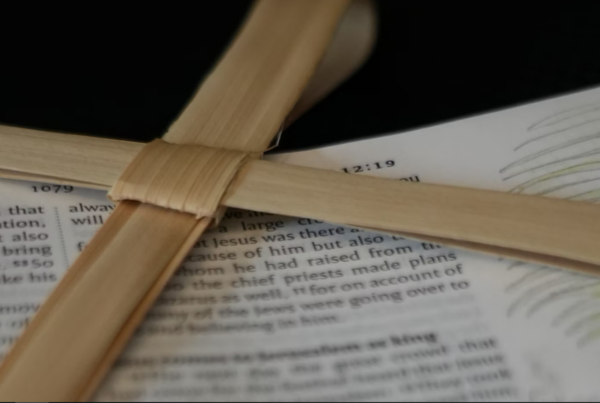On the third Sunday that Beth Fisher visited The Community Church in Ada, Michigan, she walked out with a check for $242. So did her husband, Ryan.
That Sunday, the church launched the Abundant Love Project, a “reverse tithe” that sent each person home with money to put toward helping others.
The Fishers had been looking for a church home for three years. On that Sunday in September, they finally found one.
Stewarding the windfall
Several years prior, the township of Ada began a redevelopment project that involved moving around pieces of the town, including a road near the church. That left a small parcel of land adjacent to the church property, which the township gave to The Community. The church seriously considered building a hotel and sharing profits with the hotel’s catering. But when that plan fell through, it became clear that the church didn’t have enough additional resources—money or people power—to sustain a new ministry on the property.
Instead, after getting input from partner organizations in the area, The Community decided to sell the land back so the township could build a branch library, something residents had been wanting. The church sold it for more than half a million dollars.
“Then we got this money and the question was, ‘What do we do with it?’” says Adam Kinder, the church’s treasurer and a member of every team that has been involved in deciding how to use the land and the resulting money. “We didn’t want to sit on it as an endowment. What does God want us to do with it?”
Inspired by LaSalle Street Church in Chicago, which gave 10 percent of the windfall from a land sale back to the members of its congregation, Kinder suggested that The Community do something similar. After some initial surprise, the team quickly found consensus around tithing and pitched the idea to the consistory, which also loved the idea. Not long after, the details of a reverse tithe took shape—divvying up 10 percent of the proceeds and sending each person home with a check. “Each person” is almost literal: everyone three years old and up went home with money. First-time visitors got $50, and everyone else—even if they had just been to The Community a couple of times like the Fishers—had a check for $242 waiting for them.
Since that Sunday a year ago, people from The Community have helped friends who were stuck in custody battles and in tight financial situations. They’ve picked out Angel Tree gifts and helped schools and farmers markets reopen safely when COVID-19 restrictions began to lift. They’ve started dreaming about creating retreat centers and community conversation spaces.
Note: Nearly two-thirds of the proceeds from the sale still aren’t spoken for; the congregation is trying to be faithful in discerning how to use it. Some was used to pay off the church mortgage and some was earmarked for renovations to increase the building’s capacity for hosting community events.
Generosity begets generosity
The day after Beth Fisher got a check from The Community for $242, she was gearing up for a 5:00 a.m. workout at her local gym when someone noticed that one of the women in their group wasn’t there. Someone else mentioned that the woman’s father had died, and she was scrambling to figure out how to get her family of four to the funeral on the West Coast. Right then, Fisher knew how she was going to use her money.
“When we finished our workout, I said, ‘You guys, I received this check. What if we use it to collect more?’” recalls Fisher.
“[The gym] is a very generous and giving community—a big group that rallies around to lift each other up, so it’s not something they were unfamiliar with, but it was interesting to watch their faces: ‘Wait, the church gave you money?’”
Without missing a beat, the other women pitched in their own funds toward cross-country flights for their friend. When she returned, “she was so overwhelmed that she didn’t have any words,” says Fisher. “She was overwhelmed with gratitude.”
Learning a posture of abundance
The Community has a history of generosity: Kinder mentions the hitching posts that used to stand outside the building, available for all to tie up their horses. Today, somewhere around 90 percent of members and regular attenders give to the church in a year. Still, the church has had some patches of serious financial scarcity, which has led the church leadership to commit to more transparency and intentionality around finances.
At the same time that The Community was figuring out what to do with its newly acquired land, then the subsequent $550,000, a team from the church was participating in a generosity leadership community. Facilitated by the Reformed Church in America, the leadership community offered space for congregations to deepen their practices of generosity and enrich their imaginations for financial stewardship.
“We probably would have done the reverse tithe even without the [leadership] community, but there’s no way we would have been so thoughtful about it,” says Christina Tazelaar, the chair of the church’s generosity team, which organized the reverse tithe. She says that the leadership community opened the church’s eyes to the ways it was discipling people as givers—or not.
Case in point: although so many people in the congregation give to the church, the children don’t get to see it because they are dismissed for children’s worship before the offering. That was an epiphany for the leadership community team. How would the kids learn generosity without seeing it modeled, or better yet, practicing it themselves?
“If we’re serious about that, this is our opportunity,” says Tazelaar. “We could make these kids actors in that story. … $242 is a lot of money to a small kid. What a cool investment the church can make that unlocks something that’s usually out of reach.”
Explaining the decision to give money to visitors, too, Kinder says, “We want to be as inclusive as possible because generosity is not intended to be an exclusive activity. The gospel story itself is a lesson in generosity. … If only one person has a transformative experience, then it was well worth it.”
And far more than one person has had a transformative experience through the Abundant Love Project. Several people have shared stories of the way their generosity sparked more generosity.
“It’s the power of the Holy Spirit ultimately at work there,” says Kinder. “There’s clearly been some ground work that’s been laid for someone to see a picture on Facebook and be generous in turn.”
Not only has the Abundant Love Project done good for people outside the church, it has also had an effect on the congregation itself.
“The whole of our congregation has greater capacity for generosity than the amount of money we had available from this land sale,” says Tazelaar. “What we’ve been seeing and give thanks to God for is that it’s not just about money. People are connecting with people. They’re recognizing needs around them that they did not see, or it didn’t occur to them to do anything about.”
“I’m not a theologian, I’m an accountant—but we all crave that human interconnectedness,” says Kinder. “Generosity is like hope incarnate. Generosity is usually a physical act. It’s not transactional, it’s relational—there is hope in the world.”
This article was also published in RCA Today, the Reformed Church in America’s denominational magazine.
Grow as givers
Tithing and stewardship aren’t just about paying the church’s bills. It’s an opportunity for discipleship. If you’d like resources to get your congregation thinking differently about generosity, contact Billy Norden, co-pastor of The Community and the Reformed Church in America’s retirement and financial education coordinator.
Grace Claus serves as children's ministry coordinator for a church in the Seattle area, where she lives with her family. She holds an MDiv from Western Theological Seminary in Holland, Michigan.



